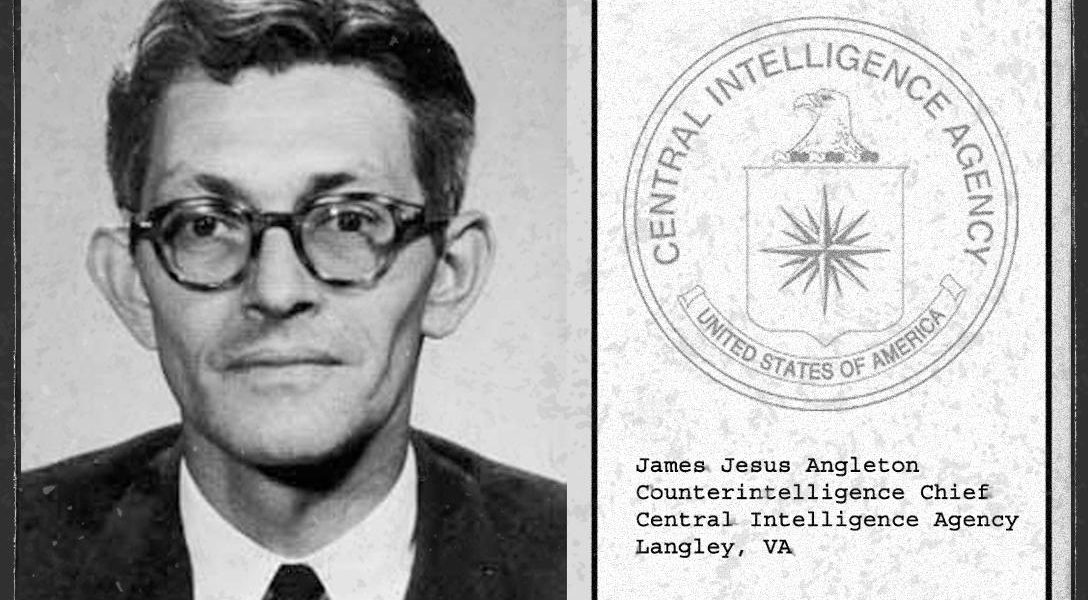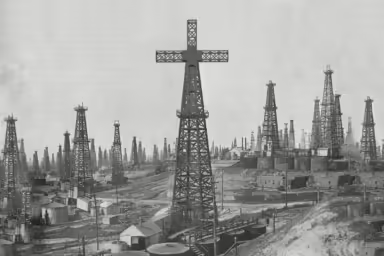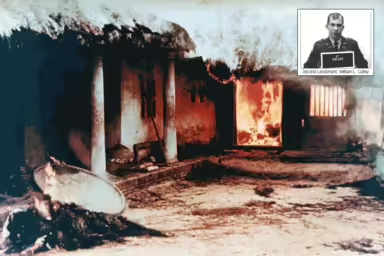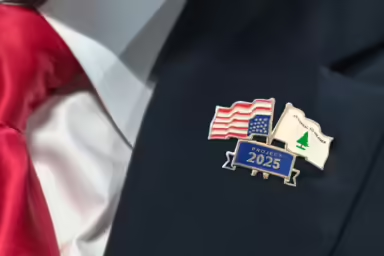This is a complex story, as fascinating as it is appalling. It is about how the CIA and FBI suppressed a major clue to the existence of a pre-JFK-assassination conspiracy. And about how alleged evidence of Lee Harvey Oswald in Mexico was manipulated and altered by elements in the CIA and their Mexican clients, the Dirección Federal de Seguridad (DFS).
When John F. Kennedy was assassinated on November 22, 1963, the United States lost more than its president. It lost its innocence. The subsequent investigations into the young president’s killing raised more questions than they answered — and caused Americans to lose faith in their government. Indeed, for many people in the US and across the world, the assassination marked the point at which their fundamental perceptions changed.
Just after the Warren Commission released its report on the assassination, the level of public trust in government was at 77 percent. A decade later it had plummeted to less than half that (36 percent).
Kennedy’s death and the circumstances surrounding it gave birth to a movement. This movement, composed of all kinds of people, is dedicated to investigating the story behind the story, to exposing the power networks hidden beneath surface events. These machinations have been dubbed “Deep Politics.” Those who study it believe there is much more to national and world events than what the public is told by government officials and evening newscasters — and, as you will see, Peter Dale Scott proves it.
On the occasion of the anniversary of Kennedy’s assassination, WhoWhatWhy is pleased to present excerpts from Chapter 2 of Scott’s latest work – Dallas ’63: The First Deep State Revolt Against the White House by Peter Dale Scott (Open Road Media, September, 2015).
For Part 1, please go here; Part 2 go here; Part 3 go here; Part 4 go here; Part 6 go here.
The Arrival of the “Phase-Two” “Visa” Intercepts
Meanwhile, late on November 23 (according to Oswald’s 201 file), Washington received its first “Phase-Two” version of why Oswald had visited the two Embassies. About five hours after the second “Phase-One” cable arrived, Washington read for the first time additional intercept transcripts suggesting that someone (“probably Oswald”) had sought Durán’s help in getting a Cuban transit visa in order to go to the Soviet Union.[130]
This more benign alternative was soon corroborated by the first detailed report of Durán’s statement after being arrested, the so-called “JKB version” (see Chapter 4) which was hand-carried to Washington by a CIA officer on November 27.[131] “JKB”, or “JK Benadum,” was the pseudonym used by George Munro, an outside CIA officer who was employed in sensitive positions by both the FBI and the CIA in Mexico City.[132]
It is often assumed that the “Phase-Two” “visa” intercepts corroborate the “Phase-Two” testimony from Silvia Durán about Oswald’s desire for a visa. In one respect, this is not true. Early reports of Silvia Durán’s testimony say that the Soviets said on the phone that Oswald’s case “would have to be referred to Moscow.”[133] This accords with the language typed onto Oswald’s visa application, that the Soviets said “that they had to wait for authority from Moscow.”[134]
But the transcript of the alleged Durán phone call at 4:26 PM on September 27 has the “outside man” (i.e., the Soviet official) saying, just as clearly, “we have to await the approval of Washington” (“deben de esperar la contestación de Washington”).[135] The reference to Washington here alludes back to, and puts a “Phase-Two” spin on, the reference in the “Phase-One” Kostikov intercept, when Oswald allegedly asked “if there anything new re telegram to Washington.”[136] It cannot however be reconciled with the Durán testimony and the visa application. Either the intercept or the testimony (if not both) has to be false.
I do wish to argue that these managed stories, fleeting and insubstantial though they are, were of central importance in determining the outcome of the Kennedy assassination investigation. In succeeding years, furthermore, the discredited “Phase-One” stories have been revived to manipulate public opinion, even after the CIA and FBI had agreed on a “Phase-Two” interpretation of Oswald’s movements in Mexico City. In 2013, for example, the discredited Garro story of the twist party was revived in a mainstream book by Philip Shenon.
The belated appearance of these “Phase-Two” intercepts (about a visa) poses some very embarrassing questions about the CIA’s performance. Station Chief Win Scott later wrote in his autobiographical manuscript, Foul Foe, that
“Lee Harvey Oswald became a person of great interest to us during this 27 September to 2 October, 1963 period … [In] the Warren Commission Report [p. 777] the erroneous statement was made that it was not known until after the assassination that Oswald had visited the Cuban Embassy!… Every piece of information concerning Lee Harvey Oswald was reported immediately after it was received…. These reports were made on all his contacts with both the Cuban Consulate and the Soviets.” [137]
A CIA memo written in 1975 by CIA Counterintelligence Chief George Kalaris, successor to James Angleton, also reported that “there were several Mexico City cables in October 1963 also concerned with Oswald’s … visits to the Soviet and Cuban Embassies.”[138] (Only one such cable reached the Warren Commission.)
The Lopez Report gathered corroborating reports, principally from the two Russian translators, that Oswald was already of interest to the CIA Station before the October 1 intercept, and that Oswald (as Win Scott wrote elsewhere) had asked the Soviet Embassy for financial assistance. If such an explosive “assistance” intercept ever existed, official traces of it have now disappeared.[139]
Win Scott’s claim of pre-assassination reporting on Oswald in the Cuban Embassy, never officially admitted or revealed, is corroborated also by Ray Rocca’s deposition in 1978 to the House Select Committee.[140] Cumulatively these reports are further evidence that cables about Oswald in the Cuban Embassy reached headquarters by a back channel. This strengthens the hypothesis, explored in Deep Politics II (pp. 90-109), that there may have been a pre-assassination CIA operation involving Oswald (or at least someone in Mexico City pretending to be Oswald) and Cuba. Such an operation, at least in its Mexico City aspects, would almost certainly have been directed by David Phillips.
Privileged authors, those who (unlike the rest of us) are able to interview CIA officers and quote from unreleased classified documents, continue to dominate the US media with their dance between “Phase-One” and “Phase-Two” accounts of Oswald. Gus Russo, for example, writes of the “tantalizing leads about a possible Cuban conspiracy with Lee Harvey Oswald.” He claims, very misleadingly, that “The CIA was unsuccessful … in preventing the arrest” of Silvia Durán, which (although opposed by the CIA in Washington) had in fact been ordered by CIA Station Chief Scott.
As noted elsewhere, there are other signs that pre-assassination knowledge involving Oswald and the Cuban Embassy has been suppressed. For some reason the FBI already associated Oswald with the Cuban Embassy in a memorandum of November 22, based on a phone call from the Legal Attaché in Mexico City.[141]
But Scott’s claim in his manuscript is hard to reconcile with his reaction to the second “Phase-One” intercept (about Oswald’s going to the Cuban Embassy for his address). If Scott did already know about intercepts linking Oswald to a visa application, there is no excuse for his having linked the address intercept to a Cuban assassination plot. If he did not know about the visa intercepts, it would appear that these “Phase-Two” intercepts were post-assassination fabrications, created ex post facto as part of a CIA cover-up.
The Importance of the Managed Oswald Stories
Most critics have given only passing attention to the role of the Oswald Mexico stories in the aftermath of the Kennedy assassination. The “Phase-Two” accounts of his visit to the Embassies (to obtain a visa), because of their abundant corroboration, are almost universally accepted, even by severe critics of the Warren Commission narrative.[142] It is not my intention at this point to challenge the “Phase-Two” version, except to urge caution in accepting it. As noted in Deep Politics II (pp. 117-30), the CIA and FBI have also managed the visa story told by Silvia Durán on November 23, editing and re-editing this story on at least four different occasions.
I do wish to argue that these managed stories, fleeting and insubstantial though they are, were of central importance in determining the outcome of the Kennedy assassination investigation. In succeeding years, furthermore, the discredited “Phase-One” stories have been revived to manipulate public opinion, even after the CIA and FBI had agreed on a “Phase-Two” interpretation of Oswald’s movements in Mexico City. In 2013, for example, the discredited Garro story of the twist party was revived in a mainstream book by Philip Shenon.[143]
Two of the key figures to keep the “Phase-One” stories alive in the early stages were CIA Counterintelligence Chief James Angleton, and his subordinate Raymond Rocca, C/CI/RAG (Research and Analysis Group). In late January 1964 Rocca sent a memo to the Warren Commission with a section on Kostikov, with a last sentence containing a new reason to suspect a suspicious Kostikov-Oswald connection:
Kostikov is believed to work for Department Thirteen of the First Chief Directorate of the KGB. It is the department responsible for executive action, including sabotage and assassination. These functions of the KGB are known within the Service itself as “Wet Affairs” (mokryye dela). The Thirteenth Department headquarters, according to very reliable information, conducts interviews or, as appropriate, file reviews on every foreign military defector to the USSR to study and to determine the possibility of using the defector in his country of origin. [144]
This last sentence so concerned another Counterintelligence [CI] officer in Soviet Russia Division that he dictated a memo to file concerning it.
“I called Tom Hall [CI/RAG] to inquire about the source of the statement included in the last sentence of para 17 of Rocca’s memo. Rocca called me sometime later and said that the source was AELADLE [Anatoliy Golitsyn, Angleton’s preferred Soviet defector]. It seems that he made the statement to C/CI [Angleton], who, himself, drafted and inserted the sentence in question.” [145]
This is one of the rare occasions when Angleton himself is visible in the JFK record. Note that he calls his preferred KGB defector “very reliable;” this was at a time when another KGB defector with a “Phase-Two” message, Yuri Nosenko, had been isolated by Angleton from the Warren Commission and confined in a specially-constructed room.[146]
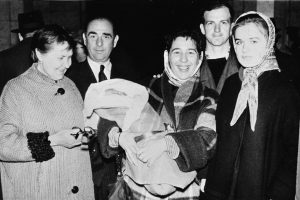
The opposing views of an Oswald-KGB relationship had by now produced, among other things, a battle between two KGB defectors, each with their supporters inside the CIA. This conflict ultimately contributed to a showdown in 1974, when CIA Director Colby fired Angleton and reconstructed the Counterintelligence staff. In the wake of Angleton’s departure the CIA conducted an internal review of its JFK assassination records, releasing some of them to the Church Committee and later the House Select Committee on Assassinations [HSCA]. At the same time watered-down Angletonian innuendos about Oswald and Kostikov were leaked to the public, notably in the 1978 book Legend, by Edward J. Epstein.[147]
To this day both “Phase-One” and “Phase-Two” versions are trotted out from time to time. These control public perceptions of the Kennedy assassination and seize the debate from genuine critics who have less access to the media. In November 1976, for example, David Phillips of the CIA Station gave a new conspiratorial “Phase-One” spin to the intercepts. At a time when student activists were pressuring Congress to reopen an inquiry into the Kennedy assassination, former Warren Commission member David Belin countered with a proposal for an inquiry to see if “there is any credible evidence of a foreign conspiracy.”[148] Backing this demand was a lengthy secret memorandum written in 1975 by Angleton’s deputy, Ray Rocca, the CIA liaison to the Rockefeller Commission.
Phillips lent strength to this “Phase-One” alternative by telling the Washington Post, falsely, that he had authored the Mexico City cable on the first intercept; and that Oswald had told the Soviets, “I have information you would be interested in, and I know you can pay my way to Russia.”[149] But there was nothing about this alleged offer in Phillips’ memoir published two years later: a “Phase-Two” account that admitted someone else had written the cable.[150]
Privileged authors, those who (unlike the rest of us) are able to interview CIA officers and quote from unreleased classified documents, continue to dominate the US media with their dance between “Phase-One” and “Phase-Two” accounts of Oswald. Gus Russo, for example, writes of the “tantalizing leads about a possible Cuban conspiracy with Lee Harvey Oswald.”[151] He claims, very misleadingly, that “The CIA was unsuccessful … in preventing the arrest” of Silvia Durán, which (although opposed by the CIA in Washington) had in fact been ordered by CIA Station Chief Scott. Referring to the questions prepared by Scott about possible Cuban or Soviet involvement, he calls them the “most critical questions surrounding the assassination.” Russo states, against the available evidence, that “Duran’s Mexican interrogators chose not to ask” them.[152] To assert this, he has to overlook the contrary testimony of Durán herself, partially corroborated by a CIA informant (LIRING-3, since identified as Carlos Delmar Jurado),[153] whom Russo cites elsewhere as “a CIA contact viewed as very reliable by the agency.”[154]
The opposite “Phase-Two” stance in this propaganda duet is assumed by Gerald Posner. Posner dismissed the claims of Alvarado (“now so discredited that few repeat his story”), five years before Russo would re-open questions of why the claims of this “young Nicaraguan” were so “quickly disregarded.”[155] Posner found Garro’s story “highly unlikely,” and unsupported.[156] Russo faulted the CIA in Mexico (i.e., Win Scott) for reaching “the wrong conclusion,” when it reported that “[The fact] that Sylvia Duran had sexual intercourse with Lee Harvey Oswald … adds little to the case.”[157]
With both of these books receiving rave reviews from the New York Times, it is hard for the American public to look behind this ballet of bestsellers, and discern the actual dynamics of case management.
The Intercepts, the Cover-Up, and the Assassination Plot
With the wholesale releases of the cable traffic in the 1990s, there is more and more recognition that the CIA and FBI, in the days after the assassination, engaged in a cover-up. Richard Mahoney reports that Bobby Kennedy, on November 29, asked Hoover if Oswald had been “connected with the Cuban operation [Mongoose] with money;” and received only a guarded reply, “That’s what we’re trying to nail down now.”[158] According to Mahoney,
“It was obvious … to anyone in the know that the CIA, in particular Allen Dulles, a Warren Commission member, had covered up the CIA’s violent relationship with anti-Castro Cubans and the fact that Oswald, as Senator Schweiker later said, “had the fingerprints of Intelligence all over him.” [159]
Even Gus Russo, whose book is throughout a defense of CIA integrity, concedes that the CIA withheld information that “could have given the public the misperception that the Agency had a relationship with Oswald.”[160] But according to Russo, Dulles’s cover-up activities on the Warren Commission were intended chiefly to protect Bobby Kennedy, rather than the CIA.[161] “A full disclosure of Mexico City matters,” Russo argues, “would have bared the Kennedys’ plans to murder Fidel Castro…. Such a disclosure would certainly have diminished JFK’s mystique as an innocent martyr.”[162] (In other words, what I shall call in Chapter 6 a “Phase-Three” story.)
Both of these two variant explanations focus on a cover-up designed to cover up anti-Castro assassination plotting in 1963: plotting in which both CIA personnel (certainly) and Bobby Kennedy (possibly) were involved. But neither Mahoney nor Russo point out the degree to which the 1963 post-Mongoose plotting involved the sources and managers of the Oswald Mexico City stories.
Next: Part 6.
For Part 1, please go here; Part 2 go here; Part 3 go here; Part 4 go here.
References
[130] CIA Cable MEXI 7033 of 23 November 232246Z; NARA #104-10015-10094.
[131] Report in Spanish of November 26, 1963; retyped and transmitted by JKB (George Munro) to Mexico City CIA Station “Re: Lee Harvey Oswald and Silvia Tirado de Duran,” NARA #104-10068-10084, p. 6. The report was prepared by “LI-4” (Fernando Gutiérrez Barrios, Assistant Director of the DFS) for “LI-2” (Gustavo Díaz Ordaz, Gobernación Chief and President-elect of Mexico). It was hand-carried to Washington on November 27 by a Headquarters CIA Officer, John Horton (CIA Cable MEXI 7105 of November 27, 1963, NARA #104-10015-10416). The report was retyped on the same machine as JKB’s covering letter, presumably to change some, but not all, of the “All tOswald” references in the Report. (All the references to Oswald in the Durán interview pages have “Lee Harvey Oswald,” but subsequent pages dealing with her relatives have “Harvey Lee Oswald.”) See Chapter 4.
[132] George Munro, a longtime Mexico resident, was an outside liaison officer for both the Mexico City CIA Station and the FBI: and was responsible for overseeing the phone intercept program (Scott, Deep Politics II, 5, cf. 120). As we shall see in Chapter 6, on June 23, 1972, after a visit from CIA Deputy Director Vernon Walters, Acting FBI Director Gray ordered that the FBI in Mexico temporarily not interview George Munro, a friend of Howard Hunt’s, about Watergate (Senate Watergate Hearings, Vol. 9, 3456; Scott, Deep Politics, xvi; cf. FBI memo of 7/21/71 re Hunt, NARA #124-10211-10223).
[133] CIA Cable DIR 85758 of November 29, 1963; NARA #104-10015-10229.
[134] Oswald visa application; 3 AH 129; 25 WH 814.
[135] CIA Cable MEXI 7033 of November 23, 1963; NARA #104-10015-10094.
[136] CIA Cable MEXI 6453 of October 9, 1963; NARA #104-10015-10047.
[137] Winston Scott, Foul Foe, ms. (retrieved for the CIA after Scott’s death in 1971 by James Angleton), 268-69, emphasis added; Newman, Oswald and the CIA, 415-16; HSCA, Lopez Report, 125.
[138] CIA Memo of September 18, 1975 from Chief, CI Staff (Kalaris), NARA #104-10051-10173; Newman, Oswald and the CIA, 462; cf. 169.
[139] Lopez Report, 82-88. Cf. Newman, Oswald and the CIA, 369-77.
[140] Ray Rocca deposition of 7/17/78 to HSCA, pp. 82-83. Rocca’s remarks may explain why the House Assassinations Committee reported from testimony that the connection between Oswald and the Cuban consulate “had in fact been made in early October 1963” (AR 249n).
[141] FBI Memorandum of 22 November from W.A. Branigan to W.C. Sullivan; NARA #124-10027-10395; FBI 62-109060-lst nr 487.
[142] Among those who accept the “Phase-Two” version as real are Newman (pp. 356-57), and Russell (pp. 492-94).
[143] Philip Shenon, A Cruel and Shocking Act: The Secret History of the Kennedy Assassination (New York: Henry Holt and Company, 2013), 496-98, etc.
[144] Warren Commission Document 347 of January 31, 1964, p. 10, emphasis added.
[145] Lee H. Wigren, C/SR/CI/R[esearch], Memo to File of 4 February 1964; NARA #104-10003-10004.
[146] Summers, Conspiracy, 194-99; AR,101-02.
[147] Epstein, Legend, 16, 237: “The FBI knew through a double agent that Kostikov … was a high-level officer of the Thirteenth Department of the KGB, heavily involved in controlling saboteurs … [T]he Thirteenth Department…was involved with planning sabotage and other violent acts.”
[148] New York Times, November 23, 1975. In first moving the resolution for a House Select Committee on Assassinations, Congressman Downing, the future HSCA Chairman, supported his case by referring to the Kostin letter, and to the CIA’s identification of Kostikov as a member of the KGB’s “Liquid Affairs Department, whose responsibilities include assassination and sabotage” (Congressional Record, House, September 17, 1976, H10360).
[149] Washington Post, November 26, 1976; Dick Russell, The Man Who Knew Too Much (New York: Carroll & Graf Publishers, 2003). 494; Scott, Deep Politics II, 97. Further support for a Cuban conspiracy was dredged from CIA files for David Belin by Raymond Rocca, a former member of the CI Counterintelligence staff under James Angleton (e.g. NARA #157-10011-10072: Memo of 5/20/75 of David Belin on Castro and assassination plots, citing Ray Rocca).
[150] Phillips, Night Watch, 139.
[151] Gus Russo, Live By the Sword, (Baltimore: Bancroft Press, 1998), 459.
[152] Russo, Live By the Sword, 344.
[153] CIA Index To HSCA Film, 4; NARA #104-10431-10003.
[154] Russo, Live By the Sword, 219; cf. Durán, 3 AH 86, 91; LIRING-3, Scott, Deep Politics II, 38. The New York Times Book Review found Russo’s book “compelling, exhaustively researched and evenhanded.”
[155] Posner, Case Closed, 194; Russo, Live By the Sword, 345.
[156] Posner, Case Closed, 191n.
[157] Russo, Live By the Sword, 219. (Russo does not quote the words, “The fact.”)
[158] Richard D. Mahoney, Sons & Brothers: the days of Jack and Bobby Kennedy (New York: Arcade, 1999), 303.
[159] Mahoney, Sons & Brothers, 336; citing Schweiker in Gaeton Fonzi, The Last Investigation (New York: Thunder’s Mouth Press), 31.
[160] Russo, Live By the Sword, 218.
[161] Russo, Live By the Sword, 363.
[162] Russo, Live By the Sword, 218.
